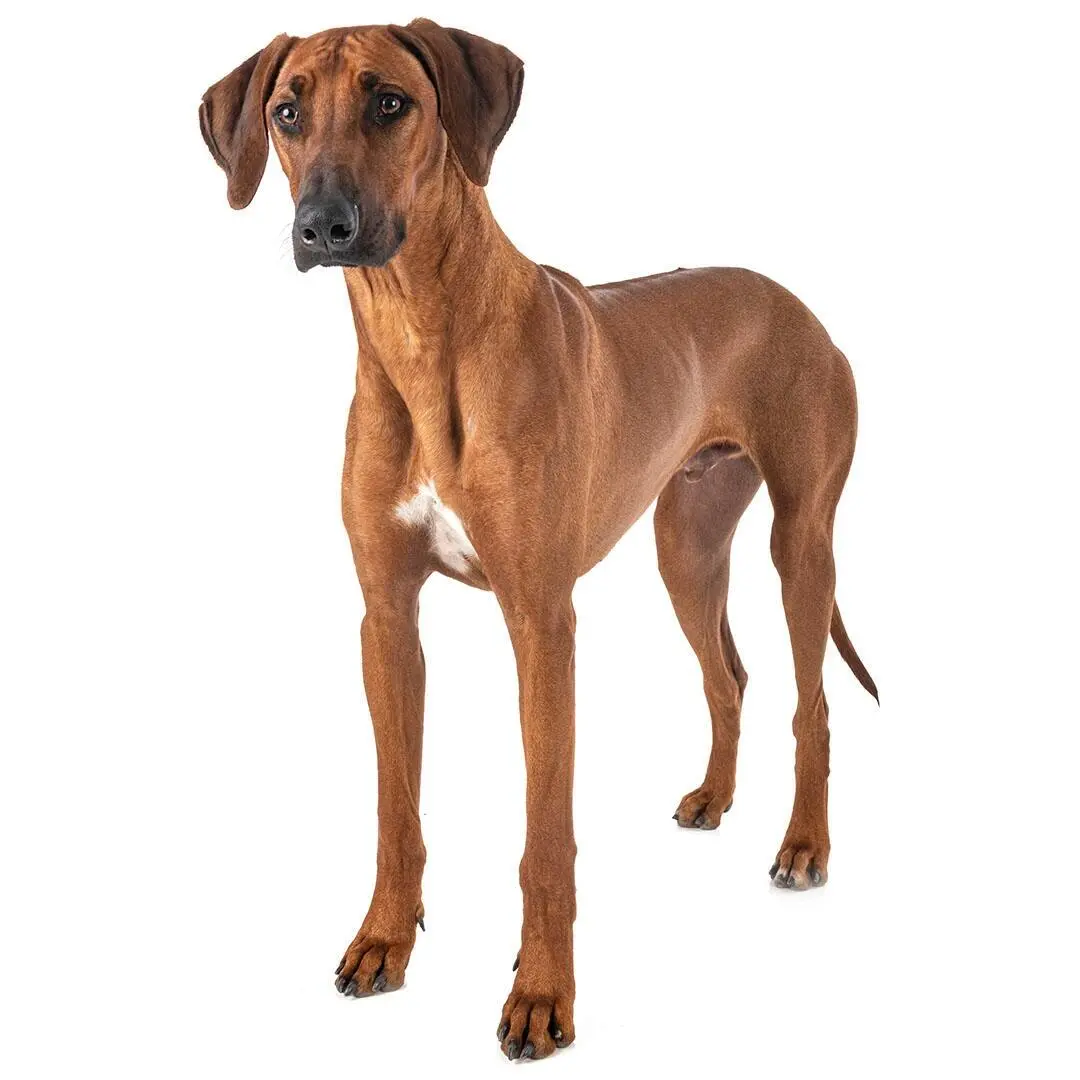
Rhodesian Ridgeback
Rhodesian Ridgebacks are large, muscular dogs known for their distinctive ridge of hair along their backs and their hunting prowess.
Extended Description
Rhodesian Ridgebacks are powerful dogs originally bred in Southern Africa for hunting large game, including lions. They are known for their distinctive ridge of hair that grows in the opposite direction along their back. Rhodesian Ridgebacks are loyal, independent, and strong-willed, making them excellent guardians and companions for experienced dog owners.
Interesting Facts
The ridge of hair on a Rhodesian Ridgeback’s back is caused by a genetic mutation and is a hallmark of the breed.
Care Recommendations
Rhodesian Ridgebacks have short coats that are easy to care for, requiring only occasional brushing to remove loose hairs. They need plenty of exercise and mental stimulation to prevent boredom and destructive behavior.
Temperament
Rhodesian Ridgebacks are confident, independent, and loyal. They are known for their protective instincts and can be reserved with strangers but are generally affectionate with their families. Early socialization and consistent training are essential to manage their strong will and energy.
Health Issues
Common health issues in Rhodesian Ridgebacks include hip dysplasia, dermoid sinus, and bloat. Regular vet check-ups, a balanced diet, and appropriate exercise are essential for their well-being.
Living Conditions
Rhodesian Ridgebacks are best suited to homes with plenty of space to roam, such as rural or suburban environments. They are not ideal for apartment living due to their large size and need for regular exercise.
Training Tips
Training should be consistent and firm, with plenty of rewards for good behavior. Rhodesian Ridgebacks are intelligent but can be independent and stubborn, so early training and socialization are crucial.
Exercise Needs
Rhodesian Ridgebacks need regular, vigorous exercise to stay fit and healthy. They enjoy activities like running, hiking, and playtime in large, open spaces where they can move freely.
Return to Other Breeds



